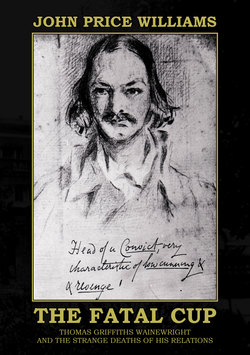Читать книгу The Fatal Cup: Thomas Griffiths Wainewright and the strange deaths of his relations - John Price Williams - Страница 8
На сайте Литреса книга снята с продажи.
Оглавлениеa “confection”, a fictional confession, purported to have been written by Wainewright in his dying days in Van Diemen’s Land. It was accompanied by copious notes and called Wainewright the Poisoner.2
But there is no proof that Wainewright administered poison to anyone. There were suspicious deaths among those close to him and one of them at least was murder in which he was probably complicit. So who was responsible?
New research into documents not seen for nearly two centuries has cast a different light upon his extraordinary life and on the deaths of his relations. And for the first time it can be disclosed what happened to the real killer.
It is time to look at the evidence again.
Thomas Griffiths Wainewright was born into privilege in Linden House, a mansion bought by books, which lay off the Great West Road in the pleasant little village of Turnham Green, five miles south west of the centre of London, notable for one of the largest battles in the English Civil War in November 1642 when the Parliamentarians blocked King Charles’ advance on London. Linden House
2. Motion, A. Wainewright the Poisoner, Faber, 2000. After its publication a retired antiquarian bookseller, Marc Vaulbert de Chantilly, pointed out to Motion that it contained 250 factual errors. de Chantilly then produced a booklet castigating Motion’s methods and detailing every error. Wainewright the Poisoner: an example of Andrew Motion’s “high scholarship”. The Vanity Press of Bethnal Green, 2000. In the Guardian of 26 Feb. 2000, Motion congratulated de Chantilly on “like all biographers and scholars, adding to an existing store of knowledge.”
THE FATAL CUP
8
